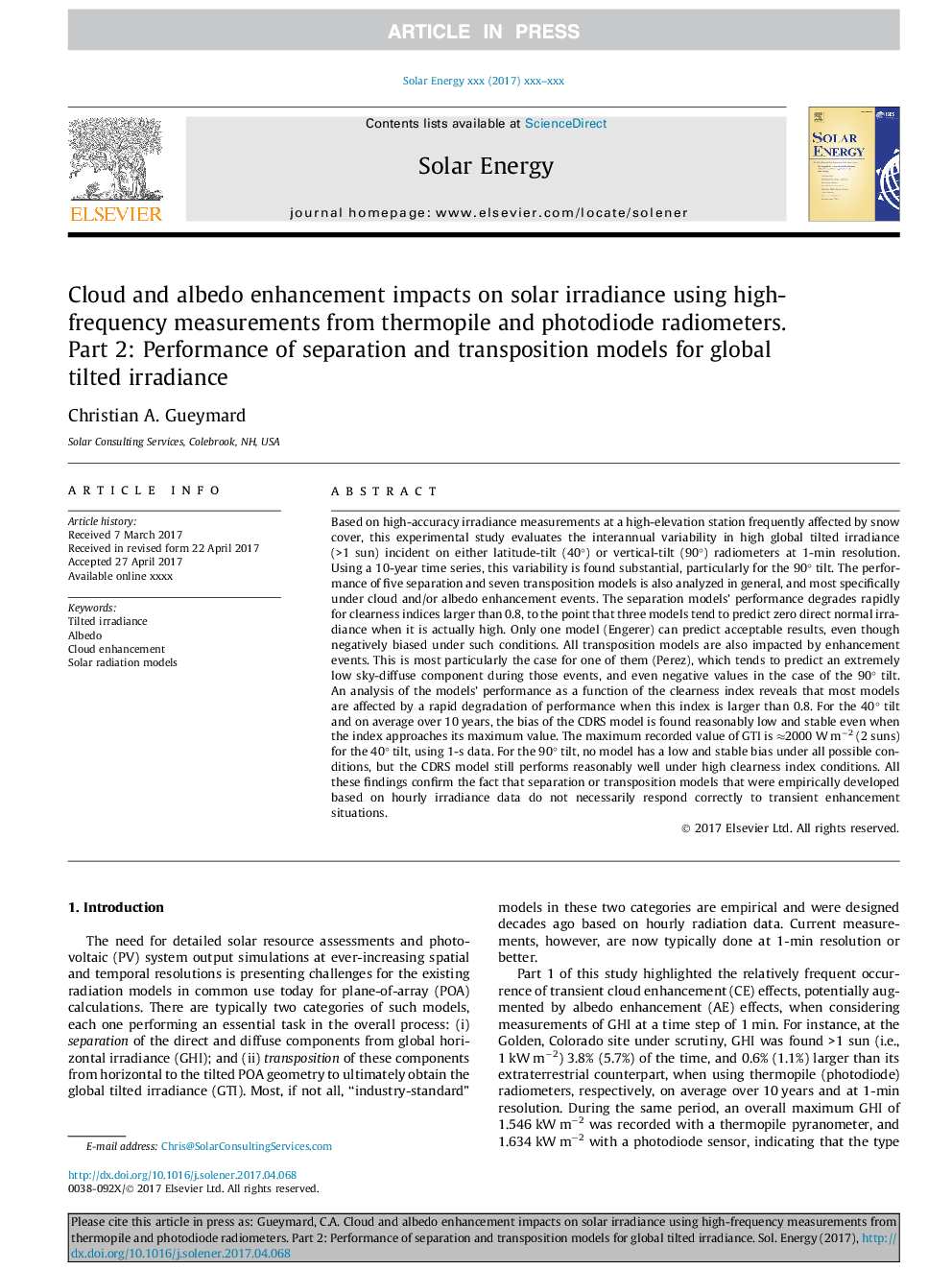| کد مقاله | کد نشریه | سال انتشار | مقاله انگلیسی | نسخه تمام متن |
|---|---|---|---|---|
| 5450758 | 1513065 | 2017 | 14 صفحه PDF | دانلود رایگان |
عنوان انگلیسی مقاله ISI
Cloud and albedo enhancement impacts on solar irradiance using high-frequency measurements from thermopile and photodiode radiometers. Part 2: Performance of separation and transposition models for global tilted irradiance
ترجمه فارسی عنوان
افزایش ابر و آلبیدو بر روی تابش خورشید با استفاده از اندازه گیری های فرکانس بالا از رادیومتر های ترموپلی و فوتودیو تاثیر می گذارد. قسمت 2: اجرای مدل های جداسازی و انتقال برای تابش تابشی جهانی
دانلود مقاله + سفارش ترجمه
دانلود مقاله ISI انگلیسی
رایگان برای ایرانیان
کلمات کلیدی
تابش تابش آلبدو، افزایش ابر، مدل های تابش خورشیدی،
موضوعات مرتبط
مهندسی و علوم پایه
مهندسی انرژی
انرژی های تجدید پذیر، توسعه پایدار و محیط زیست
چکیده انگلیسی
Based on high-accuracy irradiance measurements at a high-elevation station frequently affected by snow cover, this experimental study evaluates the interannual variability in high global tilted irradiance (>1 sun) incident on either latitude-tilt (40°) or vertical-tilt (90°) radiometers at 1-min resolution. Using a 10-year time series, this variability is found substantial, particularly for the 90° tilt. The performance of five separation and seven transposition models is also analyzed in general, and most specifically under cloud and/or albedo enhancement events. The separation models' performance degrades rapidly for clearness indices larger than 0.8, to the point that three models tend to predict zero direct normal irradiance when it is actually high. Only one model (Engerer) can predict acceptable results, even though negatively biased under such conditions. All transposition models are also impacted by enhancement events. This is most particularly the case for one of them (Perez), which tends to predict an extremely low sky-diffuse component during those events, and even negative values in the case of the 90° tilt. An analysis of the models' performance as a function of the clearness index reveals that most models are affected by a rapid degradation of performance when this index is larger than 0.8. For the 40° tilt and on average over 10 years, the bias of the CDRS model is found reasonably low and stable even when the index approaches its maximum value. The maximum recorded value of GTI is â2000 W mâ2 (2 suns) for the 40° tilt, using 1-s data. For the 90° tilt, no model has a low and stable bias under all possible conditions, but the CDRS model still performs reasonably well under high clearness index conditions. All these findings confirm the fact that separation or transposition models that were empirically developed based on hourly irradiance data do not necessarily respond correctly to transient enhancement situations.
ناشر
Database: Elsevier - ScienceDirect (ساینس دایرکت)
Journal: Solar Energy - Volume 153, 1 September 2017, Pages 766-779
Journal: Solar Energy - Volume 153, 1 September 2017, Pages 766-779
نویسندگان
Christian A. Gueymard,
